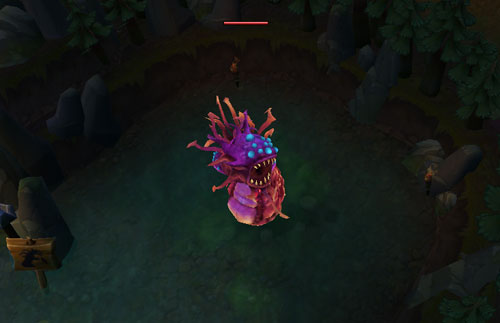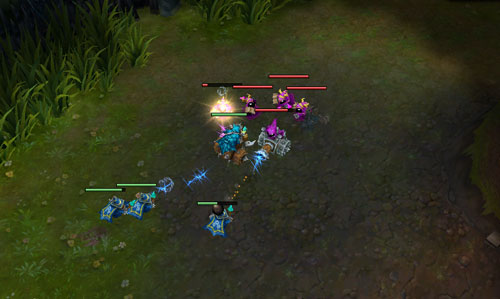
League of Legends 101
Just getting started in League of Legends? Not sure where to start? A little confused? Well take a read at a LoL 101 for all you need to get started in this popular MOBA.
Getting started with an in-depth game like League of Legends can be intimidating, as there is a lot of information that players typically do not learn until they have played many games. While watching professional streams and competitive events it can be a great resource to those who already know a bit about the game, many people need a more basic starting point to truly get off the ground in the easiest way possible.
Basic Structure
League of Legends pits two teams of five players against each other in a race for each team’s Nexus. Destroying the enemy Nexus wins the game for your team regardless of any other game factors. In front of the Nexus, other structures such as turrets and inhibitors block the path. Each of the five players or ‘summoners’ control one of over a hundred ‘champions’ with unique skills, attributes, and abilities.
Turrets: Turrets will attack enemy units, targeting minions first and champions second if no minions are present. The exception is when an enemy is attacked in range of the opposing turret. In this case, the turret will ignore all minions and other champions present, and target the assailant. While most spells have no effect on turrets, auto attacks do. Once a turret reaches zero health and is destroyed, it will not respawn.
Inhibitors: The three inhibitors sit just behind the inner turrets in a team’s base. They are the last line of defense before the Nexus and two Nexus turrets behind them. While inhibitors do not deal damage to any units, they prevent the enemy team’s Nexus from spawning super minions, which deal more damage and have higher levels of health. Unlike turrets, inhibitors will respawn after they have been destroyed.
Neutral Monsters: Aside from each team’s minions and super minions which travel in straight lines down each of the three lanes, neutral monsters occupy camps in the jungle. The jungle is the space on the map that sits between each lane, and is separated by the river running through its center. All of the jungle camps are mirrored for each team. These creeps, being neutral, have no aggression toward any player until attacked. That is to say that the neutral monsters or creeps in your team’s jungle will behave in the same way as the enemy’s would if you attacked them. The two largest neutral creeps are the Dragon and Baron Nashor. Each of these has a much longer respawn time than the smaller camps, and offers more gold and experience to the entire team, instead of just the killer. The Baron Nashor also blesses the team who slays him with a buff that offers bonus attack damage (AD), ability power (AP), health regeneration, and mana regeneration. Because of the high rewards for killing these two monsters and the fact that they are the only non-mirrored camps, teams will often fight over the objectives.

Champion Roles
Teams tend to try to fill five specific roles according to the current meta game (the most widely accepted strategy and team structure at any given time). This team structure remains fairly constant over time, but this is not to say that this lineup is the only way to play or win. Typically, an attack damage carry and support will go bottom lane, an ability power mage will go middle lane, and an ability power or attack damage bruiser will go top lane. This leaves on champion, the jungler, to kill the neutral monster camps in his own jungle, and the enemy jungle if possible.
AD Carry: An AD carry is almost always a ranged DPS champion. Their primary job is to kill minions and enemy champions for experience and gold. They are in direct competition with the enemy carry to do as much damage as possible in the late game team fights. In team fights, carries try to stay behind the the tank like champions and bruisers in a safe location where they can still deal damage.
Support: A support does his or her best to ensure that the AD carry stays alive in the bottom lane at all costs. Many support champions have crowd control abilities to push the enemy away or secure kills, heals to help your carry sustain, and shields to protect against harass. Supports typically do not kill minions for gold, as it deprives the carry. A popular alternative is to build items that give passive gold over time, such as Philosopher’s Stone, Heart of Gold, or Kage’s Lucky Pick. These can help to supplement the loss of gold from avoiding farm. Later on in the game, the Support’s job extends to the whole team in group fights.
AP Carry: The AP carry has a very similar job to the AD carry, though they have no support to protect and back them up. Farming gold and experience by killing minions and champions is extremely important to mages, as it helps them to build more items to increase their durability and damage. In team fights, mages also tend to stand behind the tanks, while poking in and out to use their abilities while not on cooldown. If no skills are available for use, pull out of the fight into safety until your utility returns instead of taking free damage. AP carries also tend to focus their spells on the champions with lower defenses: the enemy carries.
Bruiser: Top lane is the other solo position aside from middle. Champions that excel top tend to do so because of crowd control, escapes, and innate sustain (skills that replenish health and/or mana). Creep score or farm is also exceedingly important in the top lane, as it helps the entire team through the late phases of the game. The two solo lanes tend to draw a lot of focus from the Jungler (see below), so smart play balances between gaining farm and playing safe to prevent deaths from ganks. Wards can help to greatly reduce your chances of getting taken off guard and stave off unnecessary deaths.
Jungler: Because the Jungler does not have a designated lane, they must supplement their gold and experience with creeps from the jungle. These neutral monster camps can also give buffs to help with jungling and ganking lanes. A gank is simply an ambush into any of the three lanes in an attempt to surprise the enemy and gain a kill for you or your teammates in the lane. Blue buff gives cooldown reduction on spells as well as increased mana regeneration to increase damage done to neutral creeps, while red buff grants bonus physical damage and a slow to increase the efficacy of ganks. It is important to bear in mind that while these buffs greatly benefit a Jungler early on in the game, they often prove to be more effective on the AP carry (blue buff) and AD carry (red buff) after the first respawn time or two of each camp.

Game Phases
The basic strategy for each role and the team in general changes depending on how long the game has gone on. While these phases are by no means set in stone, they will give you a general idea of how a typical game progresses.
Early: Early game tends to focus on laning and getting ahead of the enemy team. A more aggressive team or lane will try to force fights to get kills, while a more passive one will try to remain safe and farm. Neither of these strategies is ‘right,’ exactly, because this style depends on each player’s comfort level and preference. Even in a passive lane, however, ganks from your Jungler typically signal a chance for a kill, and usually warrant aggression. Likewise, the appearance of the enemy Jungler usually mandates a return to safety at your tower if at all possible.
Mid: Mid game is the in-between phase of the game where the phase can easily swing between the farming and laning phase and the team fighting phase. Because different team compositions and specific champions excel at different aspects of the game, the turning point can be as early as the 10 minute mark, or as late as 30 minutes or so.
Late: The late game tends to begin when the laning phase ends. Instead of staying in their respective places, champions will now either roam around the map, or group up at a certain objective. Many times, this can be a tower, an inhibitor, Dragon, or Baron Nashor. At this time, team cooperation becomes even more vital to your success. Team fights (typically a 5 vs 5 engagement) now become the deciding factor for which team controls the map and can destroy objectives.

Remember that no roles or phases are concrete, and that each game is exciting and different from the last. The best way to learn is to play and gain experience, but learning from others is a great way to get started. Best of luck, and see you on the Rift!
Ambrielle ‘KatanaMordecai’ Army